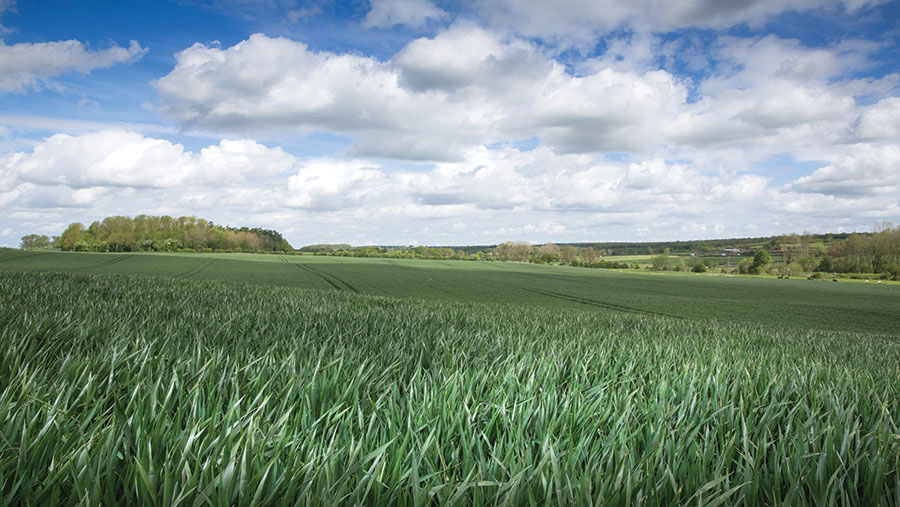New climate module predicts cereal growth and disease risk
 © Tim Scrivener
© Tim Scrivener Cereal growers can now benefit from a climate prediction module that uses weather data to forecast key growth stage timings of crops to improve input efficacy and plan workloads.
The technology, developed by agronomy firm Hutchinsons, for it’s Omnia precision software, enables users to predict and alleviate crop stress, allowing them to make informed and earlier decisions about spray thresholds to minimise pest and disease risk.
See also: New drone app rapidly identifies crop disease
David Howard, the company’s head of integrated crop management, highlights how data collected in the field can be turned into useful knowledge.
“Using the information, growers can start to predict when pest and disease issues are likely to occur, driving proactive decision-making and improving agronomic advice,” he says.
How it works
Nick Strelczuk, Omnia’s precision technology specialist, explains how the virtual station provides localised data on both historic and future weather and soil conditions, using a combination of ground-based stations, satellite imagery and complex modelling systems.
“Users can find data on soil temperature, soil moisture, solar radiation and wind speed, as well as a 10-day weather forecast, which is accurate to 1sq km,” he says.
Multiple stations can be set up across different holdings, on a mobile phone or desktop device. This creates more accurate, remote and scalable information than physical weather stations.
“Farmers can use data to help them make decisions earlier and find out what is happening to their crops just by logging on, before driving to the field itself, ” says Mr Strelczuk.
Data can also be used to identify the optimum timings for machinery to travel on land, limiting soil compaction, which is particularly important given the industry’s greater focus on soil health.
Crop modelling
The new crop modelling feature, powered by information on weather and degree day calculations, displays current and predicted development stages for wheat and barley crops on a sliding timeline.
This enables growers to identify the most accurate treatment timings, with high-risk periods highlighted in order to improve chemical input efficacy, while reducing the risk of resistance build-up.
“Pest and disease forecasts are also available, with email alerts to notify you of high-risk events across the farm,” says Mr Howard.
He also highlights how the model can predict harvest dates, and stresses it is completely configurable, as data can be amended by the user, so it accurately reflects what is in the ground.
“Users can reset information and alter a crop’s growth stage timing, with the technology benefiting from inputs from farmers and agronomists,” he adds
Not only this, but the module allows farmers to visualise on-farm decision-making, providing a record-keeping system that can be used to justify the need for treatments, while enabling planning to prioritise workloads.
The climate module is now available for farmers to use for free with just a simple set-up required.
